Recent releases from the BFI Flipside
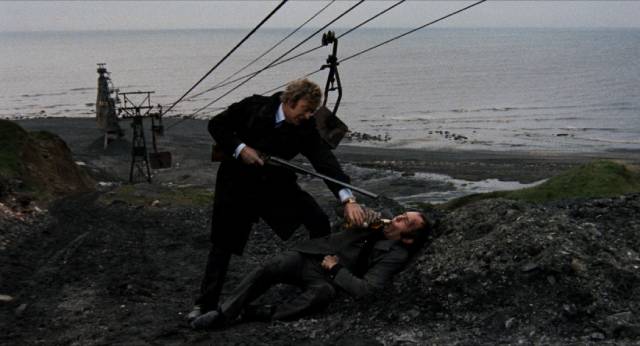
It’s been a while, but I recently placed an order with the BFI. The trigger was their new release of a 4K restoration of Mike Hodges’ Get Carter (1971) – though I only bought the two-disk Blu-ray edition, resisting the pull to make the change to 4K UHD. The film looks richer and darker here than in Warners 2014 Blu-ray, and still seems completely undated even as it captures its particular time and place with unflinching authenticity. As nasty a film as ever made for the mainstream, it nonetheless remains exhilarating for the flawless qualities of the filmmaking – script, direction, cinematography, every performance from Michael Caine down to the smallest supporting role and, of course, Roy Budd’s score, one of the greatest in all of British cinema.
I have several more disks to get to – a Blu-ray upgrade of Frank Hurley’s South (1919), documenting Shackleton’s Antarctic expedition, packed with additional material from 1898 to 1922; Fred Zinneman’s The Men (1950), starring Marlon Brando in his first screen role; and the Nigel Kneale/Rudolph Cartier adaptation of Orwell’s Nineteen Eighty-Four (1954), which after long last will replace my gray-market DVD from 2010 – but I began making my way through this batch with the two most recent Flipside releases, Volume 2 of Short Sharp Shocks and The Appointment (1982), the only feature by Lindsey C. Vickers, whose short film The Lake (1978) was included in the first Short Sharp Shocks collection.
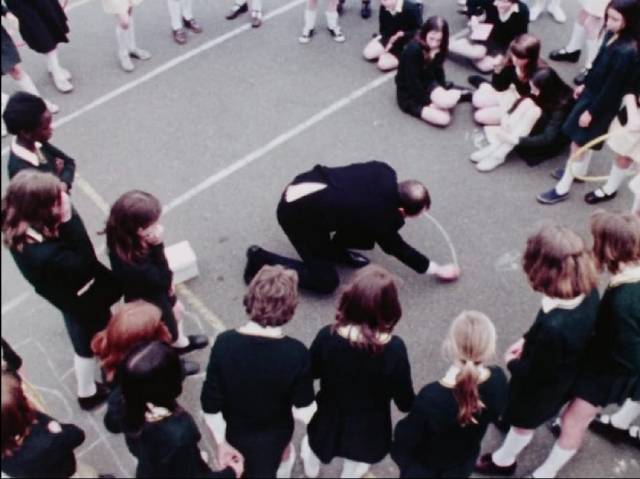
Short Sharp Shocks Volume 2 (Various, 1943-1986)
Like the first set, Short Sharp Shocks 2 is a random mix of items most of which were originally released as part of cinema programs back before distribution and exhibition pared back what was on offer to a single unsupported feature. As with the set itself, those programs gave customers a little bit of everything – horror, suspense, comedy, warnings about everyday dangers.
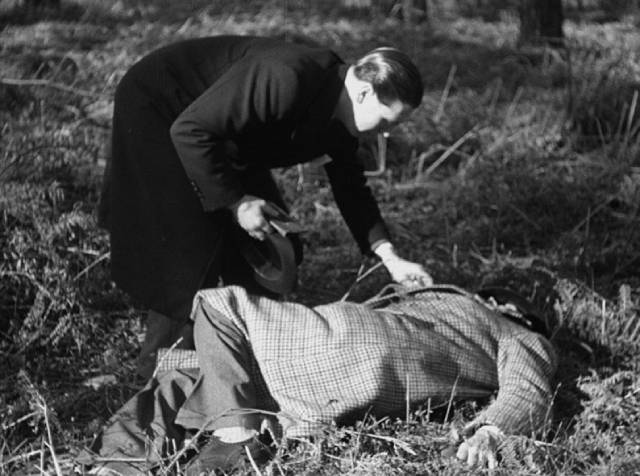
Quiz-Crime No. 1 (14:00, 1943) & Quiz-Crime No. 2 (19:00, 1944)
In the middle of the war, producing-directing team Ronald Haines and Jean Haines challenged audiences to solve crimes along with a police detective. Each episode has two cases – three murders and a kidnapping – which are quickly sketched in by the detective who addresses the audience directly. The scenes are rather perfunctory and crudely staged and edited, with the detective examining the crime scene, questioning a few witnesses, then giving members of the audience a moment to figure out the solution before going back over the scene to point out the clues which enabled him to nail the culprit immediately. It’s all about as sophisticated as a game of Clue, but perhaps provided an amusing diversion for war-weary patrons.
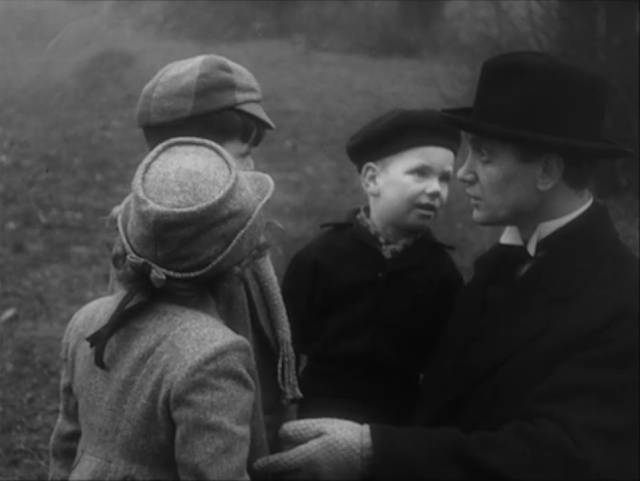
The Three Children (3:00, 1946)
Conceived by someone named A.F. Bishop, this is a really creepy little public service announcement. We see three small children, each setting off alone on some errand – this was back when parents were unconcerned about the risks the world posed for little ‘uns (even in the late ’50s and early ’60s, my brother and our friends would head off on our bikes and disappear for the day without anyone wondering where we’d gone and what we were up to). There are glimpses of busy streets as the kids hurry off, but before they get to where they’re going, they meet in a park and decide to play together for a moment. Then, among the trees, they encounter a slightly sinister man who invites them to come along with him and, hand-in-hand, they walk off into the distance and fade from view. The ostensible message of this little film is all-but-lost on a viewer today; the original intention was to warn parents about the danger of traffic – the oblique suggestion is that these kids have all been run over crossing the street – with the sinister man actually a personification of Death taking them into the beyond. But now, what we’re likely to see is a predator taking the kids away for some perverse horror. Compressed into a few minutes, this is a dark and disturbing glimpse into perennial parental fear.
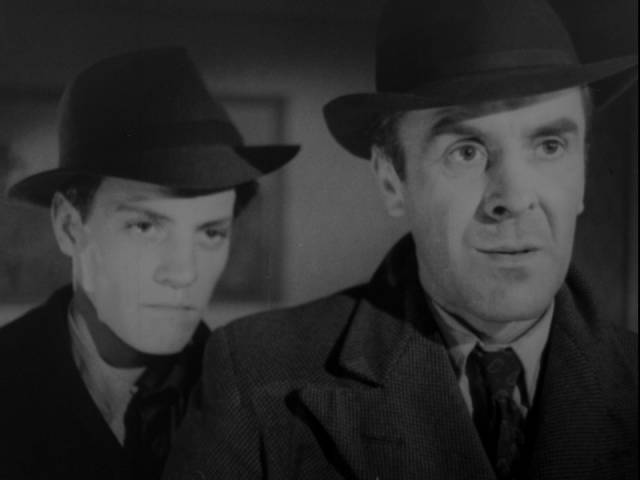
Escape From Broadmoor (39:00, 1948)
John Gilling was a prolific writer and director of B-movies in the ’50s before he raised his game in 1960 with The Flesh and the Fiends and began a stretch with Hammer Films … but it started here with his first short feature, which is framed with text cards signed by Gilling in which he claims to have heard the story directly from the psychopathic killer Pendicot (John Le Mesurier). The title is a bit misleading as Pendicot’s escape from the famous prison for the criminally insane happened some time before the movie begins. Pendicot is lying low in a dingy cellar, supplied with food by petty crook Jenkins (Tony Doonan) who doesn’t know his true identity. The story opens with Jenkins evading a detective as he takes supplies to Pendicot – the police already know the two men are connected and are closing in. Their points of surveillance include the house of Roger Trent (Frank Hawkins), where ten years earlier Pendicot murdered the maid during a robbery attempt. Trent fears that Pendicot intends to return in search of some valuable jewels, but Inspector Thornton (John Stuart) is dismissive of the idea that the killer will return to the scene of the crime – which, needless to say, he does with Jenkins as his helper.
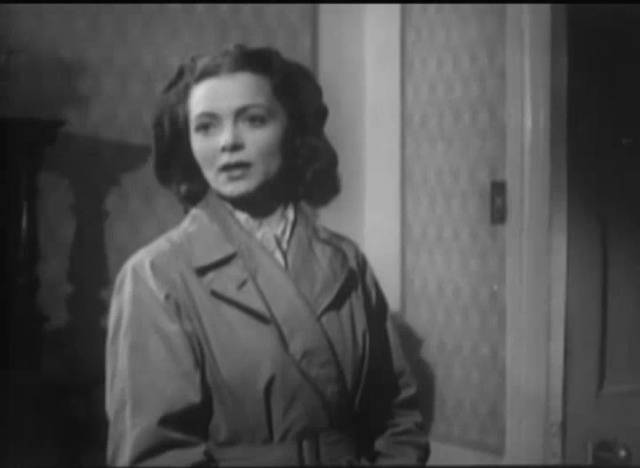
Waiting for the house to be empty, Pendicot and Jenkins break in and start trying to crack the safe, but the spooked Jenkins hears something and a strangely unafraid maid walks in on them, taunting Pendicot. It only gradually dawns on the killer – and the audience – that this is actually the ghost of the murdered maid (Victoria Hopper), returned to make sure that Pendicot gets his comeuppance. Strangely, it’s Jenkins who dies during the encounter, while the killer is carted off to be returned to Broadmoor.
Pacing is uneven and even at just 39 minutes the film feels padded, but with limited resources Gilling generates some atmosphere and, more importantly, gets a couple of very good performances from Le Mesurier, many years before becoming a fixture in British television comedy, and Hopper, here at the end of a brief movie career during which her husband, producer Basil Dean (founder of Ealing Studios), had tried without success to make her a star. Her appearance as the ghost of Susan the maid injects both humour and energy into the rather creaky proceedings.
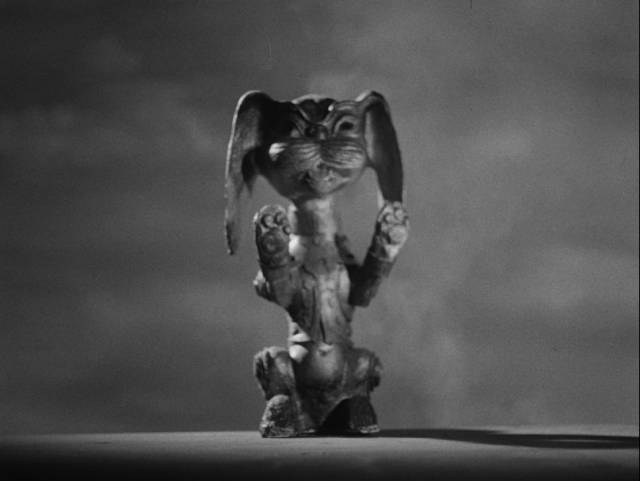
Mingoloo (20:00, 1958)
Two of Theodore Zichy’s short films were included in the first Short Sharp Shocks set – Portrait of a Matador and Death Was a Passenger (both 1958). Mingoloo was made the same year, between those two. Sculptor Mark Langtree (Anthony F. Page) has a dream about a giant Chinese dog statue and, on waking, recreates it in clay. Because it’s so unlike his usual work, he covers it up when a delegation arrives to discuss a lucrative contract for some official art. As they talk about terms, Langtree’s assistant Linda (Therese Burton) uncovers the figure and works on it herself. This gives Mr. Leventa (Reed De Rouen) the impression that she created it, and he invites her to dinner at a nightclub where he offers her £1000 for the rights to use it as the basis of a toy. Various confusions ensue, but everything is eventually resolved when it’s discovered that Leventa is using the toy figures to smuggle drugs from the Far East. The elaborate dream element doesn’t have much to do with the plot, which mixes criminals and comic confusions, but the film is almost sunk by the irritating performance of Burton, who seems to think she’s in a broad music hall skit.
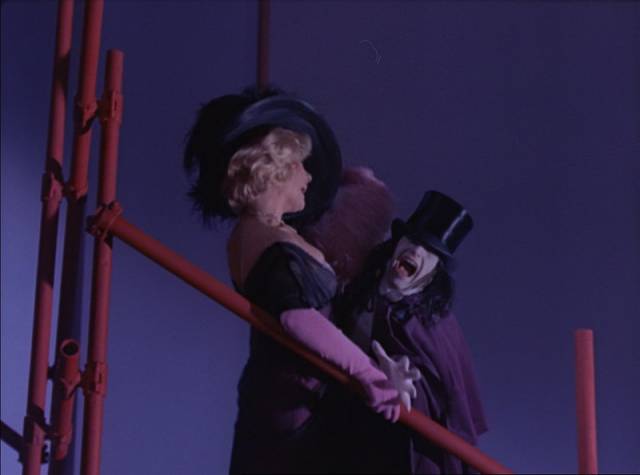
Jack the Ripper with Screaming Lord Sutch (3:00, 1963)
I vaguely recall the name Screaming Lord Sutch from the early ’60s, when I would listen to pop music on the radio and various TV shows, but don’t really know much about him. Apparently he legally changed his name as a kind of tribute to Screamin’ Jay Hawkins, and his performing persona was like a proto-Alice Cooper. He worked with some famous musicians and spent decades running unsuccessfully in elections, holding the record for running thirty-nine times between 1963 and 1997, and forming the Official Monster Raving Loony Party in 1983. All of which provides an odd background for this brief film, essentially a music video before the form was invented. It’s a truly tasteless piece of work, with Sutch in heavy theatrical makeup, wearing a cloak and top hat as he struts around a multi-level stage stabbing various women to death as he sings gleefully about being Jack the Ripper. The song was apparently a novelty hit, though it’s not particularly catchy or memorable and Sutch’s mugging for the camera suggests he doesn’t take the music seriously.
The most interesting thing about it is that it was made to be played in a kind of video jukebox called a Cinebox, which was intended as a novelty for pubs and clubs but never caught on. Because of the song’s nature, it was unsuitable for the staid BBC, so it didn’t find a home on television either – until, that is, it was incorporated into a popular comedy show in 1989. Tastes certainly do change with the times.
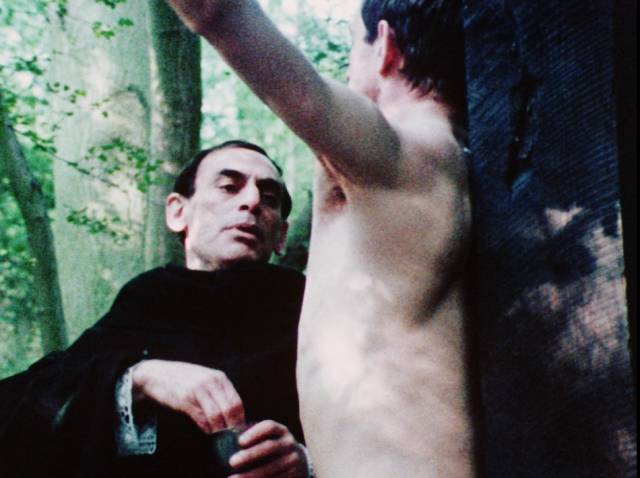
The Face of Darkness (57:00, 1976)
This, the longest film in the set, is the ambitious first, and only, feature by Ian F.H. Lloyd, who had previously made a documentary about birth control. It begins in Medieval times with a priest (John Bennett) burying an occultist (David Allister) alive where two paths cross in the woods. In the present day, ambitious backbencher Edward Langdon (Lennard Pearce) is pushing a new, draconian security bill in Parliament. He’s meeting strong resistance from people who see it as a big step towards Fascism. With the help of some ancient texts, he embarks on an ambitious, and insane, plan to win over public opinion. Finding the burial place in the woods, he disinters the Undead, over whom he hopes to have controlling power, but it turns out he fumbles the ritual (rooted in the Tibetan Book of the Dead) when he fails to bite off the man’s tongue; not being deprived of speech, the Undead can act independently, going along with Langdon’s plans only as long as he feels like it.
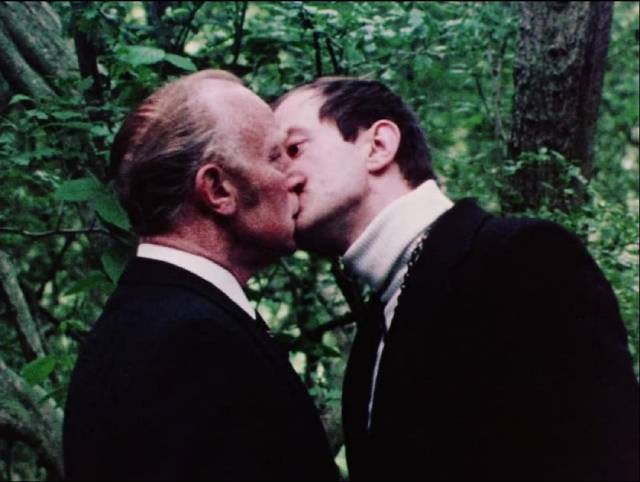
The plan itself is brutal. Langdon uses the Undead to commit a terrorist act, blowing up a group of schoolgirls in a playground, to generate sufficient public outrage to force the government to pass his bill, which in turn boosts his own power, conflating personal ambition with the supposed “public good”. Made a few years into the IRA’s bombing campaign in England, triggered by the Bloody Sunday massacre in 1972, and a few years before Margaret Thatcher became Prime Minister, Lloyd’s horror film captures the tenor of the times, presaging the social oppression of the next decade during which supposed threats to order were used to crush everything from organized labour to home entertainment. Although rough around the edges, The Face of Darkness is a dense, atmospheric exercise in politically-charged horror, with some excellent performances – Pearce, Allister and Bennett (who plays a double role as the original priest and a modern psychiatrist who tries to probe the mind of the Undead), and Gwyneth Powell as the mother of the primary victim of the bombing, who suffers the emotional indignity of a television interviewer (played by Lloyd himself) callously asking how she feels about the death of her daughter.
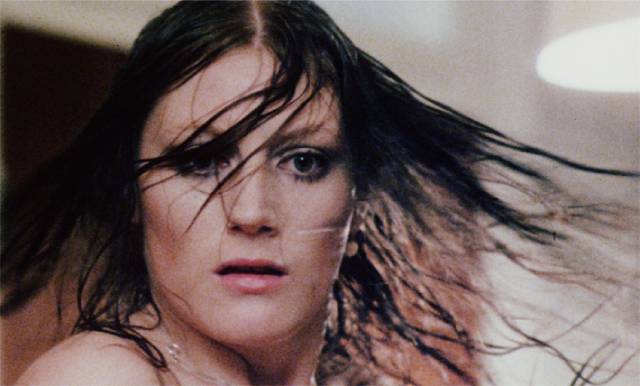
The Dumb Waiter (17:00, 1979)
Robert Bierman’s first feature, Vampire’s Kiss (1988), was the movie that made me dislike Nicolas Cage so much that it automatically made me dislike almost any movie he starred in – Wild at Heart (1990) is still the only David Lynch movie I can’t abide, largely because of Cage’s performance. That eventually changed with The Rock (1996) and Face/Off (1997), but I didn’t really begin enjoying Cage again until The Bad Lieutenant: Port of Call – New Orleans (2009), Season of the Witch and Drive Angry (both 2011). Which is all just to say that I’m leery of Robert Bierman, a filmmaker who came out of the same British advertising environment as Tony and Ridley Scott. I can’t imagine what he would have made of The Fly (1986) if he hadn’t dropped out of the project, making way for David Cronenberg to create a masterpiece. It turns out, though, from a lengthy interview on the disk, that Bierman is a very likeable guy and now I’ll have to try and track down a copy of his 1997 adaptation of George Orwell’s novel Keep the Aspidistra Flying.
Nine years before Vampire’s Kiss, Bierman wrote and directed a short film intended to be a calling card on the way to a career in features which never materialized. Based on an unsettling incident in which he and his girlfriend found themselves inexplicably pursued by an angry driver, The Dumb Waiter (1979) has a woman (Geraldine James) pursued through the streets of London by an unknown stalker who tries in various ways to break into her flat. Fearful, she calls her boyfriend and asks him to come over as quickly as possible, but doesn’t tell him about the man threatening her. In the end, she’s paralyzed by fear and the final image freezes at a critical point. The Dumb Waiter is an exercise in constructing suspense from a simple situation which mounts steadily towards an ironic crisis point, and it benefits a great deal from James’s performance even though the character’s actions don’t always make sense. It also benefits from the work of veteran cinematographer Billy Williams, who, shooting entirely at night, keeps things atmospheric.
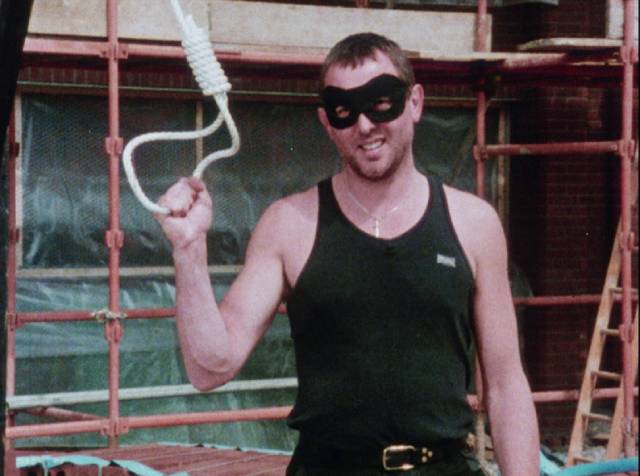
Hangman (16:00, 1985)
Another fine example of the imaginative use of horror to make a point about safety, Hangman (1985) was funded by a building trades organization to warn workers about the many dangers they face on construction sites. Like John Mackenzie’s famous Apaches (1977), about the dangers kids face on farms, this short depicts a series of nasty deaths; but where Mackenzie’s film has a cumulative effect of genuine tragedy, Hangman (directed by David Evans) uses an unsettling tone of black humour. On a building site, a man in a tank top and a black mask builds a gallows. Obviously amused, he challenges the audience to spot all the risks in various scenarios, then uses chalk to draw the stick figure gallows of the children’s game Hangman as he gauges that the audience fails to see every danger.
The film opens with a rapid succession of accidents, all involving a deadly fall from high up in various buildings under construction. Then, after the Hangman’s challenge, we see each accident again but in more detail; then we see each one a third time as he points out every individual risk. The accidents are all quite visceral, so the repetition serves the bludgeon viewers into (hopefully) greater awareness. To hammer the point home, at the end the smug Hangman makes a misstep and gets crushed beneath some falling beams. For one final irony, the stunt coordinator overseeing all the lethal falls is named Stuart Fell.
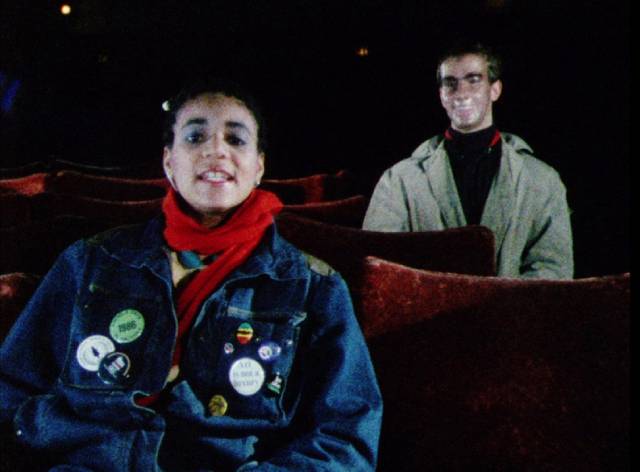
The Mark of Lilith (33:00, 1986)
The Mark of Lilith (1986) is very much of its time. During the 1970s and into the ’80s feminists undertook a rigorous interrogation of the ideological and psychological mechanisms of cinema, rooted in part in the French psychoanalytical film theory of people like Jacques Lacan. This was all part of a larger project to deconstruct the ways in which social structures establish and reinforce particular power dynamics – going back to Marx’s economic analysis of class relations which was further elaborated with the addition of Freudian ideas about psychology; not surprisingly, feminists found a lot to work with in cinema when they began to deconstruct gender and the ways in which deeply embedded ideas imposed particular social roles on individuals based on those definitions of gender.
Following the publication of Laura Mulvey’s hugely influential essay “Visual Pleasure and Narrative Cinema” in 1975, with its codification of gendered roles not just within cinema itself but also within the audience – the power of the male gaze and its subjectivity in contrast to the female as observed object – feminist filmmakers began to look for ways to break what was perceived as a deeply embedded paradigm. The best work done during this period combined a rigorous theoretical approach with content which itself provided the emotional and psychological pleasure which draws us to cinema.
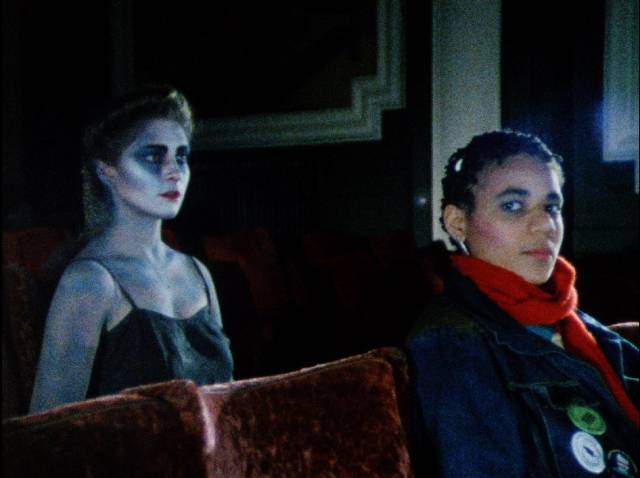
This was the period when female domesticity was examined in unconventional ways in films like Laura Mulvey and Peter Wollen’s Riddles of the Sphinx (1977) and Chantal Akerman’s Jeanne Dielman, 23, Quai Du Commerce, 1080 Bruxelles (1975), which worked to retrain the audience’s eye so that female characters might be viewed as the subjects of their own lives rather than simply objects to be desired by male viewers. Other significant works, theoretical yet aesthetically and emotionally absorbing, were Sally Potter’s short film Thriller (1979), in which La Boheme’s Mimi comes to realize that she is trapped in a mechanism specifically constructed to kill her to gratify men’s desire for tragic romance, and The Gold Diggers (1983), a complex deconstruction and revision of film history from a feminist perspective; Marleen Gorris’s De stilte rond Christine M. (1982), in which she proposes that a male-centric legal system is literally incapable of hearing the female voice, and Gebroken spiegels (1984), which analyzes the economic and psychological dimensions of sex workers’ lives; and Lizzie Borden’s Born in Flames (1983), which combines feminist concerns with racial, economic and political issues in a near-future dystopia, and Working Girls (1986), which covers similar ground to Gebroken spiegels.
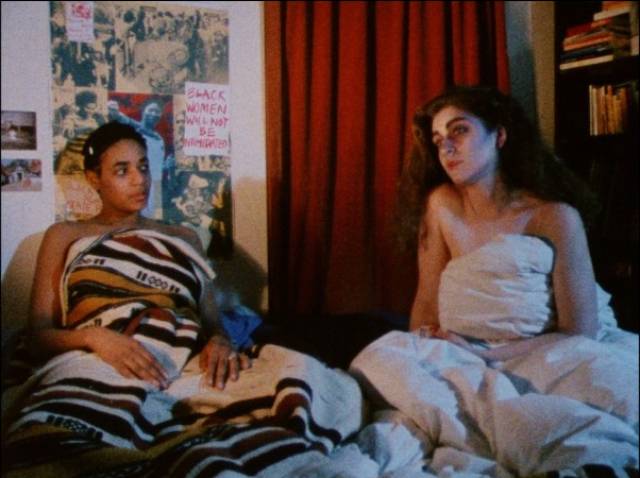
The Mark of Lilith came at the tail end of this first round of feminist experimentation, so many of the ideas contained in this short film made collaboratively by three students – Polly Biswas Gladwin, Bruna Fionda and Zachary Nataf – were already well-established. The biggest weakness of the film is that it doesn’t find a way to fully integrate the ideas with its narrative, choosing instead to state its thesis bluntly with direct address to the audience. Zena (Pamela Lofton) is a student working on a study of the ways in which the patriarchy has recast female sexuality and autonomy in terms of the monstrous, going all the way back to Lilith (Adam’s first wife, discarded because she refused to be submissive, and transformed into a succubus preying on men in their sleep).
Zena encounters Lillia (Susan Franklyn), a vampire who prowls London at night with her male companion Luke (Jeremy Peters). While he’s a traditionally predatory monster, after Lillia meets Zena and they begin a lesbian relationship, she begins to question the role she has been assigned – this process includes her becoming able to see herself in a mirror, acquiring a subjective identity at odds with the definition imposed on her by tradition. This process isn’t really dramatized; it’s explained, with Zena speaking directly to camera a number of times. Nonetheless, there are some effective visual moments, including a sequence at an amusement park into which the photography and editing inject some energy.
*
The quality of the transfers in the set varies widely, not surprising considering the rarity of many of the source materials. The two-disk set includes several quite substantial extras – lengthy interviews with Ian F.H. Lloyd (43:00), Robert Bierman (40:00) and Polly Biswas Gladwin, Bruna Fionda and Zachary Nataf (33:00), who all go into detail about the origins of their respective films and the particular challenges of creating work with very limited resources. There’s also a short piece about the Ritzy, a repertory cinema in which parts of The Mark of Lilith were shot, plus some image galleries and a booklet with brief essays about each film.
*
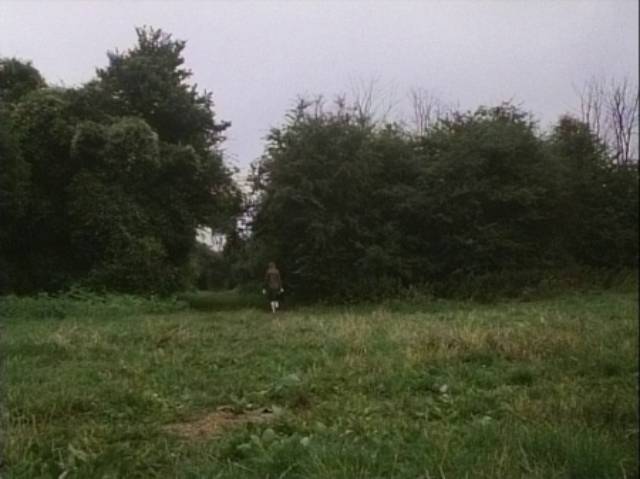
The Appointment (Lindsey C. Vickers, 1981)
Lindsey C. Vickers’ The Appointment (1981), his only feature as writer-director after a career as an assistant director, mostly on horror movies from Hammer and Amicus, has an unsettling atmosphere, but left me feeling a bit irritable. The narrative is almost ridiculously simple – a father disappoints his daughter when he has to miss her school music recital for business reasons and her anger unleashes a force which kills him – but the telling is very oblique and makes extensive use of one of my least favourite horror movie devices: premonitory nightmares. Shock elements which turn out to be dreams almost always feel like a narrative cheat to me.
In a creepy prologue which climaxes with a startling shock effect, a schoolgirl takes a shortcut home through the woods. She hears voices calling her name and the bushes move strangely when there’s no breeze. Then, abruptly, an invisible force grabs her and she’s violently pulled into the undergrowth. A voiceover drily reports on the inability of the police to solve the “murder” and three years later, adolescent Joanna (Samantha Weysom) is completing a music course at school, with the climactic performance scheduled for the following evening. When she gets home, her father Ian (Edward Woodward) awkwardly tells her he has to go out of town for a business meeting and won’t be back in time.
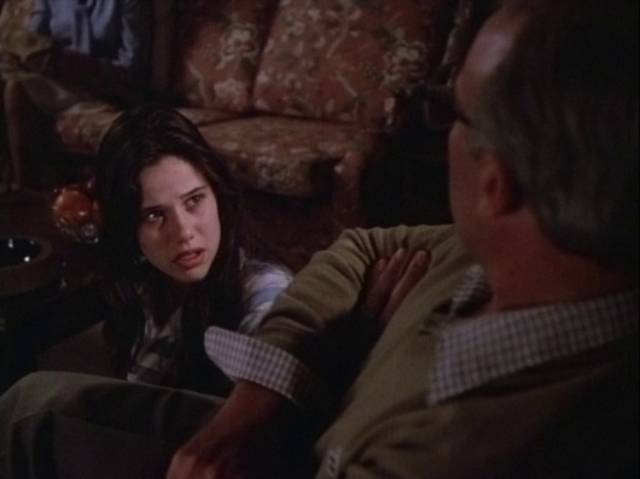
Over the course of the evening, family tensions build. Joanna pouts and wheedles, trying to get him to change his plans, while wife and mother Dianna (Jane Merrow) looks on with impatience and unease. We sense that there’s something very unhealthy about Ian’s relationship with Joanna, that he himself is immature, that her love for him is rooted in a history of indulgence. This doesn’t mean there’s anything necessarily sexual – although she certainly uses almost seductive physical contact as she puts pressure on in hope that he’ll change his plans – but it’s undeniably a form of emotional incest. This, not the supernatural element, is what makes the film so unsettling.
During the night, everyone dreams and they seem to share the same dream about Ian being in a catastrophic car crash. Although it’s not spelled out, you get the feeling that Joanna is drawing on that supernatural force in the woods and exerting an influence over her sleeping father and mother. But it’s not enough to make Ian change his plans; he’s still driving to London for his meeting. As he drives along winding country roads it seems that the unseen force is following him and little things begin to go wrong, leading finally to the crash he and Dianna saw in their shared dream.
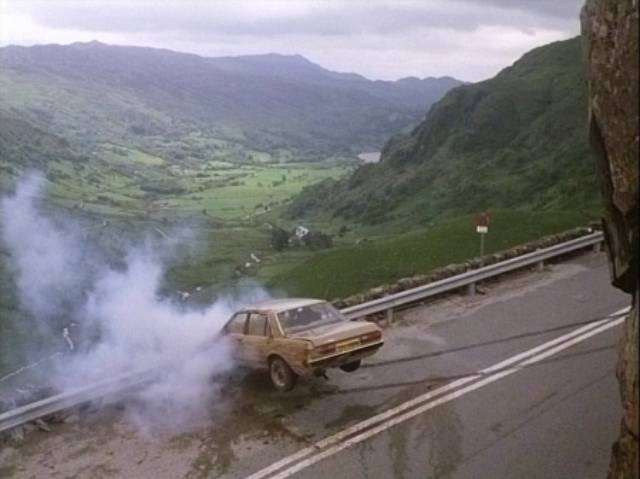
And that’s it. A very slight story, almost little more than an anecdote, but Vickers manages to create strong scenes – the family together in the living room in the evening is particularly good, with all the unhealthy emotional undercurrents evoked through exchanges of looks more than the sparse dialogue. And given the relatively low budget, Vickers creates some impressive effects; the supernatural abduction of the girl in the prologue has a shocking impact and the climactic crash is a remarkable sequence, logistically complex, superbly photographed and edited, and quite unexpected in scale given the modesty of the rest of the film. Vickers displays real cinematic skill, both visually and in his work with the cast, all of whom give excellent performances … so it seems strange that he didn’t make another film after this. Perhaps I’ll be enlightened when I get around to listening to his commentary and the lengthy interview included on the disk.
Other extras include a short conversation between Vickers and his wife Jan about the project, Vickers reminiscing over a collection of production photos, Merrow relating how she took the job on a temporary return trip to England, and assistant director Gregory Dark talking about working on the project. Also included are Vickers’ short film The Lake (1978) and all the extras for that which were previously included in the first Short Sharp Shocks set.
Comments